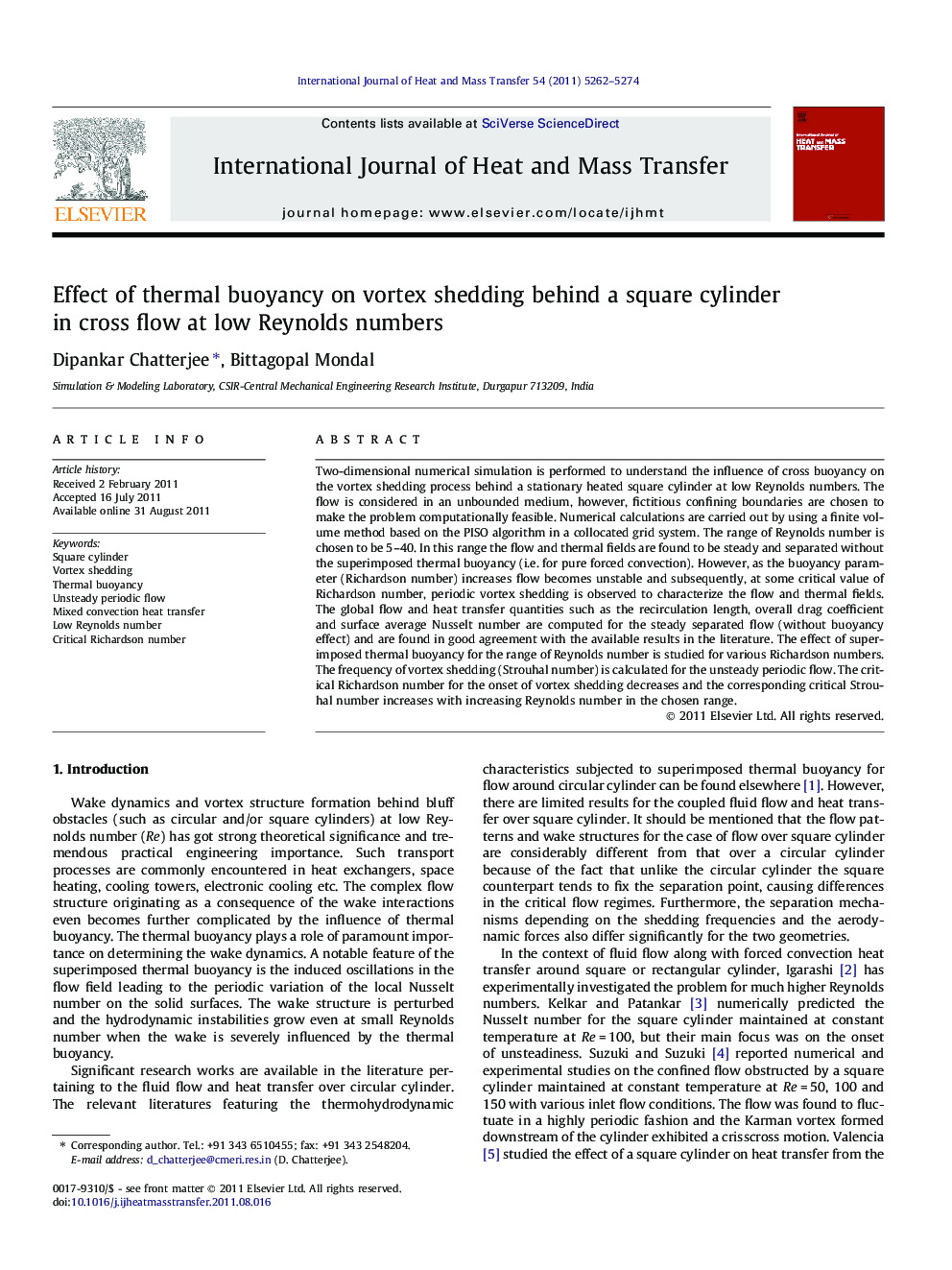| Article ID | Journal | Published Year | Pages | File Type |
|---|---|---|---|---|
| 659367 | International Journal of Heat and Mass Transfer | 2011 | 13 Pages |
Abstract
Two-dimensional numerical simulation is performed to understand the influence of cross buoyancy on the vortex shedding process behind a stationary heated square cylinder at low Reynolds numbers. The flow is considered in an unbounded medium, however, fictitious confining boundaries are chosen to make the problem computationally feasible. Numerical calculations are carried out by using a finite volume method based on the PISO algorithm in a collocated grid system. The range of Reynolds number is chosen to be 5-40. In this range the flow and thermal fields are found to be steady and separated without the superimposed thermal buoyancy (i.e. for pure forced convection). However, as the buoyancy parameter (Richardson number) increases flow becomes unstable and subsequently, at some critical value of Richardson number, periodic vortex shedding is observed to characterize the flow and thermal fields. The global flow and heat transfer quantities such as the recirculation length, overall drag coefficient and surface average Nusselt number are computed for the steady separated flow (without buoyancy effect) and are found in good agreement with the available results in the literature. The effect of superimposed thermal buoyancy for the range of Reynolds number is studied for various Richardson numbers. The frequency of vortex shedding (Strouhal number) is calculated for the unsteady periodic flow. The critical Richardson number for the onset of vortex shedding decreases and the corresponding critical Strouhal number increases with increasing Reynolds number in the chosen range.
Keywords
Related Topics
Physical Sciences and Engineering
Chemical Engineering
Fluid Flow and Transfer Processes
Authors
Dipankar Chatterjee, Bittagopal Mondal,
